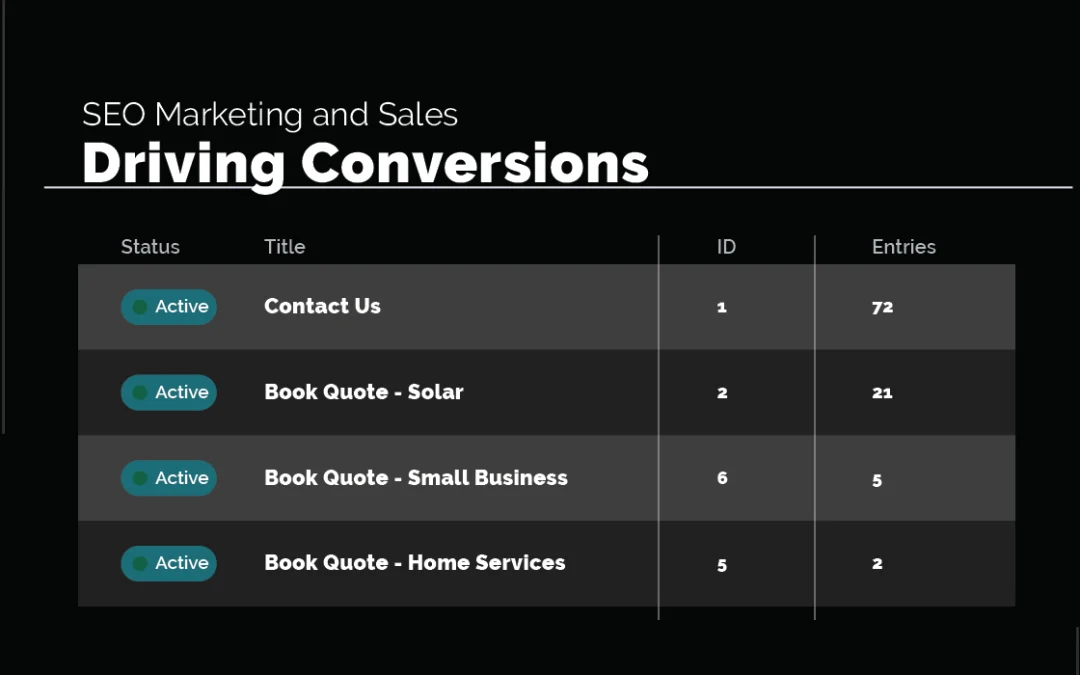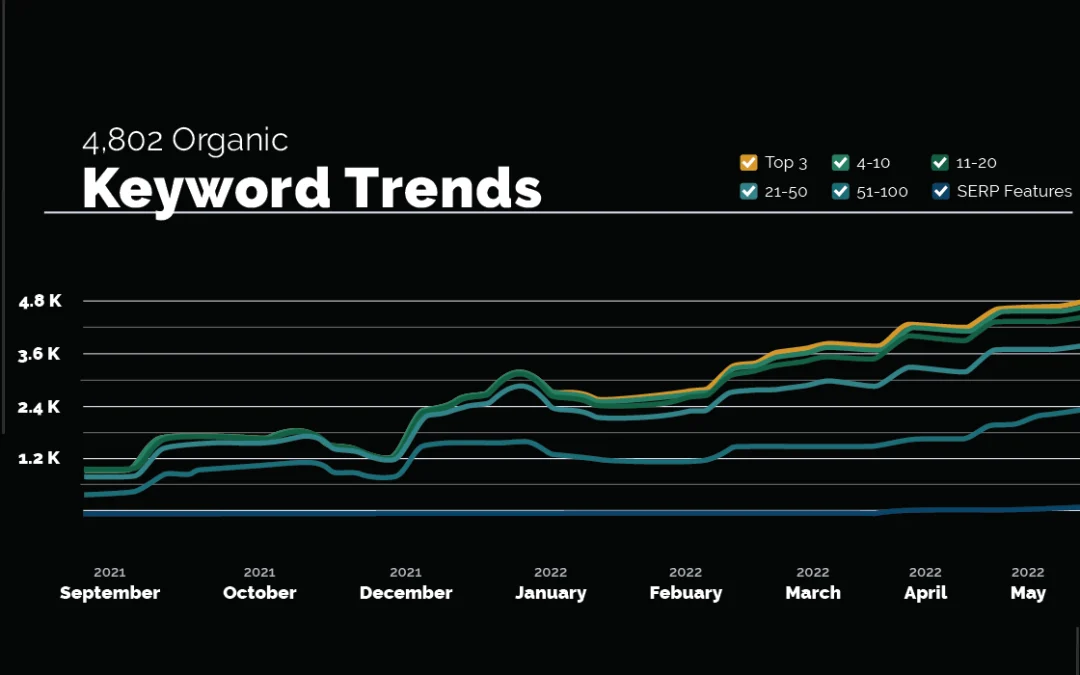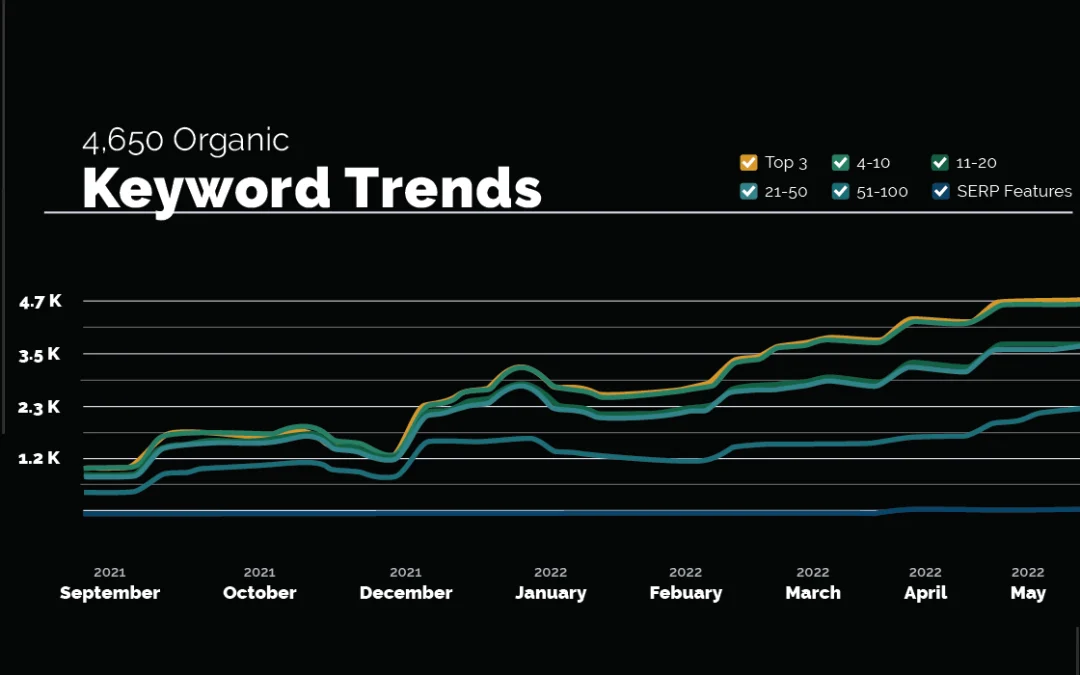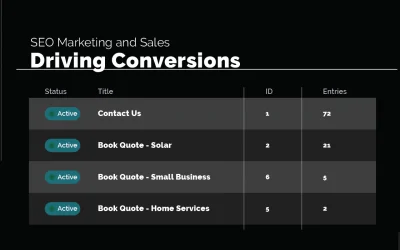Summary
- Google’s AI Overviews are reshaping organic search by displaying AI-generated summaries and curated links ahead of traditional search results.
- AI Overviews can reduce organic traffic due to increased zero-click searches and heightened competition for top spots, as users get answers directly from overviews—potentially lowering click-through rates for other results.
- Brands can improve their chances of being featured in AI Overviews by targeting long-tail keywords, using structured data, building authority, and continuously updating content.
- AI Overviews are more prevalent in certain industries like healthcare, B2B tech, and ecommerce, and are more likely to appear for queries that generate featured snippets or involve specific questions.
Last year, at SocialNext 2023, I gave a presentation on how Google’s Search Generative Experience was going to change SEO, and to expect a limited rollout throughout Q3 2023 before global rollout in Q4 2023 / Q1 2024. Well, my timing was off: Google started rolling out AI Overviews across the United States in May 2024, with more countries to follow.
Whether you love or hate them, one thing is clear—it’s a game-changer for organic search.
Running SEO campaigns that get results is our business at Monochrome Marketing, so we’re here to show you what to expect now that AI Overviews are becoming the new normal. Read on to discover more about how this feature works, what it will do to your traffic, and how you can optimize your content to take maximum advantage of its potential benefits.
Anatomy of an AI Overview
AI Overviews look simple at first glance, but there’s a lot behind these little snippets that now show up ahead of the blue links we’ve all grown to expect after typing in a keyword or query.
Key Elements of AI Overviews
When you type in certain queries, Google now displays the following:
- An AI-generated “snapshot”—usually a couple of sentences or a short paragraph that either summarizes a topic or answers a question.
- A series of links to resources that support the information provided in the snapshot. These are displayed under the snapshot, but ahead of all other results.
- Product listings (for certain searches related to ecommerce). These display key pieces of information like the name, price, and availability of top products related to the user’s search.
How Google Creates AI Overviews
No one outside of Google knows exactly how they create AI Overviews—we know it involves the use of their Gemini model, which is designed to be able to answer longer and more complex questions.
We also know that it uses techniques like Natural Language Processing (NLP) to interpret the keywords and user intent behind each query so that the AI can search the web for relevant sources and pull information from them. But what’s more important is understanding what makes Google choose to show an AI Overview (or not) in response to a given search.
| More Likely | Less Likely | |
| Long Tail Keywords | X | |
| Questions | X | |
| Branded searches | X | |
| Local searches | X |
Where AI Overviews Appear (& Where They Don’t Yet)
Critically, not every search generates an AI Overview—in fact, at the time of this writing, Google only displays AI Overviews for 15% of searches (down from 84% when the feature was first rolled out).
The rule of thumb is that AI Overviews are more likely to appear when Google determines that generative AI can provide the user with a genuinely useful answer. But they’re much more likely to show up for certain types of queries than for others.
AI Overviews Are More Likely to Show Up For:
- Queries that produce featured snippets. Featured snippets often appear in response to searches with long-tail keywords—and AI overviews often accompany them.
- Questions. One of the most common applications for AI Overviews so far has been to provide quick answers to specific or nuanced questions asked by users. Since these types of questions often involve long-tail keywords, there’s a lot of overlap between these factors.
AI Overviews Are Less Likely to Show Up For:
- Searches that produce site links, like branded searches. The presence of site links in search results make AI Overviews far less likely to appear.
- Local searches. There’s potential for AI Overviews to provide useful information for these types of searches by summarizing reviews or features of specific businesses—but right now, local searches actually make AI Overviews less likely to show up.
AI Overviews by Industry:
AI Overviews also appear more in searches related to some industries than others. The current niches where you’ll see them most often include:
- Healthcare (63% of all searches)
- B2B Tech (32%)
- eCommerce (23%)
- Insurance (18%)
- Education (14%)
- Entertainment (14%)
- Finance (5%)

How AI Overviews Are Impacting Organic Traffic
There’s already been a lot of hand-wringing about how AI Overviews are going to drive down organic traffic for brands—conservative estimates from back in February put the losses at about 25% on average, but results from affected businesses have been reported that seem to fall anywhere from 2-90%.
In other words: nobody knows exactly how bad it’s going to be for them—but everyone’s concerned.
And while the numbers are hard to predict, the concern is well-founded. Here are a couple of reasons AI Overviews are likely to impact your organic traffic:
- More Zero-Click Searches: Some users will now get their answers directly from the overview, eliminating the need for them to click on links to your site.
- Increased Competition for Top Spots: AI Overviews display a small number of related links prominently but push traditional organic listings down—which incentivizes brands to work harder at optimizing their SEO in hopes of reaching those coveted top spots.
- Changes in User Behavior: Quick answers in overviews are expected to lower click-through rates (CTR) for organic results over time as more users rely on summaries instead of visiting websites.

Optimizing Your Content for AI Overviews
The real question most brands and agencies are asking is what they can do to help AI Overviews include links to their content. Currently, there’s no step-by-step playbook for this—the feature is still too new, and the inner workings are still too secret. But based on the trends we’ve identified so far, we can create a few effective ground rules:
- Optimize the content most likely to generate AI Overviews first. This includes content for the industries where AI Overviews appear most, as well as content designed to compete for long-tail keywords (including questions).
- Create new content that targets long-tail keywords. Learn the specific questions your audience is asking and create content that answers them directly.
- Use structured data to make your content easier for Google to interpret. This could include article schema, FAQ schema on informational pages, and product schema for ecommerce pages.
- Change the way you analyze SEO performance. Semrush’s position tracking can actually show you see how many times a site appears in AI Overviews.
- Build up your brand to create more authority: This is a big one. Google has always claimed to prioritize authoritative content—but as per the recently-leaked Google Search API documents, it also uses Navboost data to help determine authority based on the navigational intent of users. This means that building a recognizable brand offline now has a clearer impact than ever on your search rankings—and can make your content more likely to be linked to in AI Overviews.
- Keep updating your content and refining your SEO strategy. Fresh, current content is more appealing to Google—and they’re continuing to update AI Overviews based on the global response to the rollout, which means all of this criteria is potentially subject to change.
We’ve written elsewhere about the steps agencies can take to navigate these changes. Read more here: 5 Tactics for Agencies to Navigate the SEO Landscape in the Age of Google’s AI Overviews
How Prepared Is Your Brand for AI Overviews?
AI Overviews represent a challenge for many businesses—but they’re also a potential opportunity for those that can successfully reorient themselves in the new landscape.
The key takeaway if you want Google to reference your content in AI Overviews is this: user intent now matters more than ever.
Since Google is using AI to provide increasingly individualized results to specific queries, it’s on you to know what your audience wants and how they’re trying to find it so you can deliver the goods. That means your content strategy needs to be backed up by more market research about your audience, and validated by more SEO data than before.
To learn more about planning and creating content that can compete at this new level, connect with our team at Monochrome Marketing. Our experienced SEO specialists can help you get a clearer picture of where you stand and how to move forward as the global search environment continues to evolve.
Frequently Asked Questions about Google’s AI Overviews
How do content creators benefit from appearing in AI Overviews?
AI Overviews are the first results displayed for queries that generate them. They also include a limited number of links (2-5 on average), which are displayed more prominently and invitingly in this area—often resulting in higher CTRs.
How do AI Overviews affect SEO for eCommerce?
Since AI Overviews for ecommerce searches display product listings and key information, optimizing your product pages with structured data improves your chances of being featured and helps drive more traffic. It’s more important than ever to ensure your eCommerce site is SEO-friendly and up-to-date.
How important is EEAT for appearing in AI Overviews?
EEAT (Experience, Expertise, Authoritativeness, and Trustworthiness) are the guidelines that Google claims to prioritize when assessing and ranking content. This includes content that is well-researched, accurate, and created by or with input from recognized experts.
But navigational intent also matters—especially since the news that Google has been using Navboost data to help determine what users are trying to navigate to when they search, and making that a key part of their ranking criteria.
That doesn’t mean EEAT isn’t important, but it does mean you should also focus on backlinks and offline brand building. When more people are actively trying to find your brand, it’s likely to appear in AI Overviews (and search results in general) more often.









